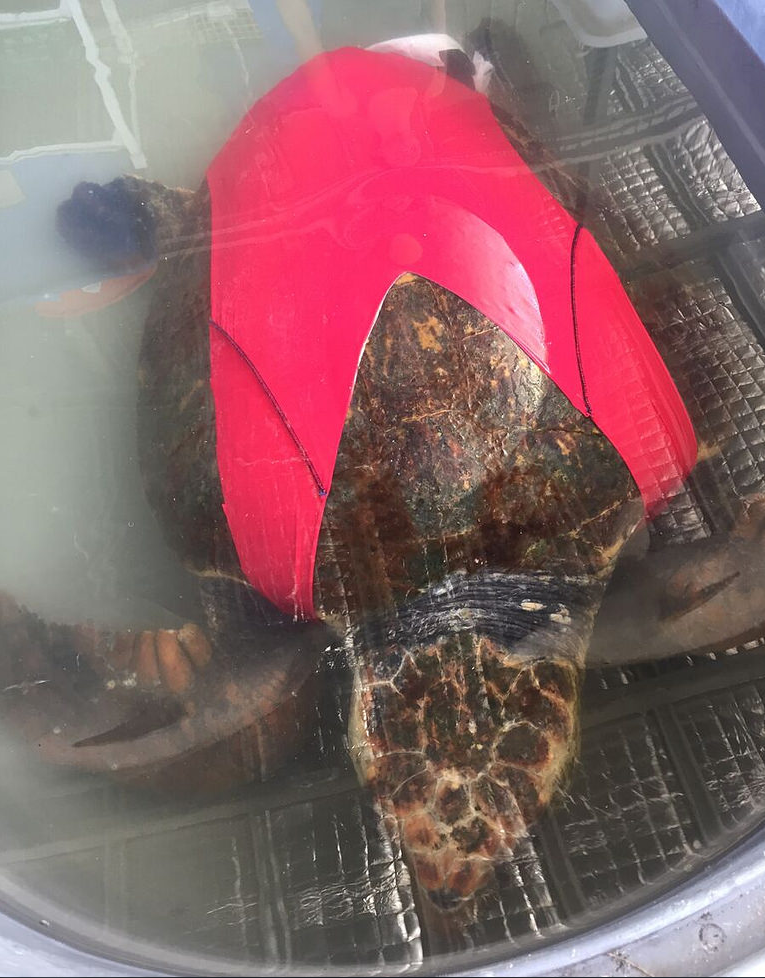Turtles step out in tiny science suits
 Sea turtles are testing out the latest in summer swimsuit fashion, as part of a project to find out more about their eating habits.
Sea turtles are testing out the latest in summer swimsuit fashion, as part of a project to find out more about their eating habits.
Collecting the faeces of a 120kg sea turtle in the open ocean is no simple task, so University of Queensland researchers have developed customised swimsuits to help.
The swimsuits act as a harness for a giant nappy that will allow experts to research the diet of endangered sea turtles.
The team from UQ’s School of Biological Sciences say knowing details of the turtles’ diet will let them locate their foraging areas, which will help to better protect the species.
PhD student Owen Coffee says the stylish swimsuits were born out of earlier efforts to gather turtle turds.
The researchers captured six loggerhead sea turtles and kept them in seawater tanks at UQ’s Moreton Bay Research Station until they defecated.
“However, it was challenging to collect the entire faecal sample once it dispersed into the water,” Mr Coffee said.
“So we developed a flexible funnel anchored to the shell, to fit over the turtle’s tail.
 “But this was not a good answer either. Because the animals are so large, it was difficult to keep the devices in place.”
“But this was not a good answer either. Because the animals are so large, it was difficult to keep the devices in place.”
While Mr Coffee was brainstorming the problem with research staff, the station’s education coordinator, Dr Kathy Townsend, said researchers had previously developed soft, flexible harnesses when studying the vision of sea turtle hatchlings.
“It was made out of swimsuit material and fitted snugly over the turtle’s shell,” Dr Townsend said.
So, Mr Coffee bought second-hand rashies from a local op shop and got to work.
The sleeves were removed, slits sliced up the sides and the bottom sewn together in two places, leaving space for the turtle’s tail and the detachable faecal collector.
“After a few modifications, including Velcro-attachments for the ‘nappy’, we hoped we had the perfect solution to our unusual problem,” Dr Townsend said.
“To our great surprise, it worked perfectly.
“The suits were easy to put on, comfortable for the sea turtles to wear, looked great, and Owen was able to collect the entire faecal sample.”
After the samples were collected, the world’s best-dressed sea turtles had their swimsuits removed and were returned to Moreton Bay; leaving behind important scientific samples that will be used to further protect their species.








 Print
Print